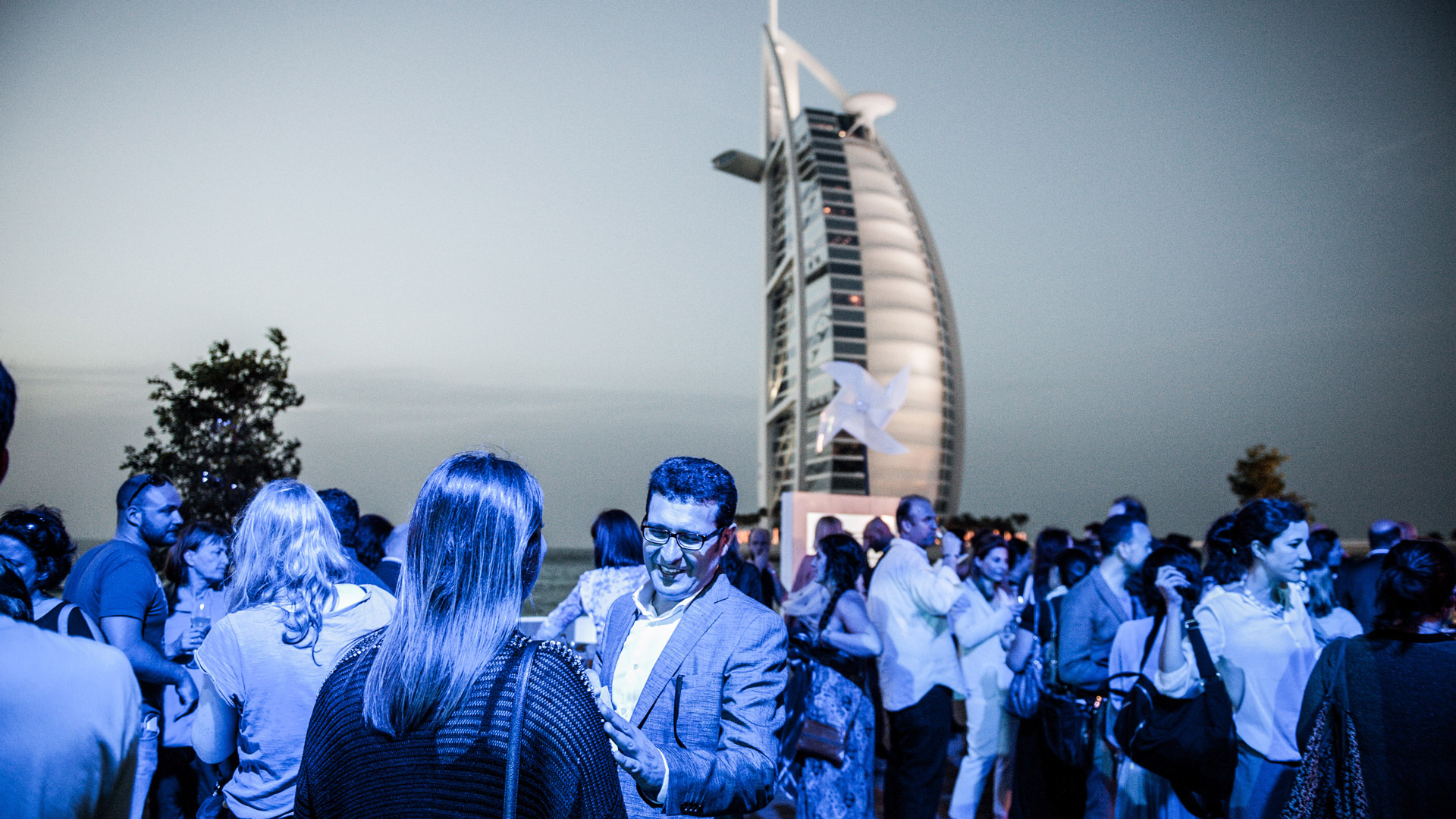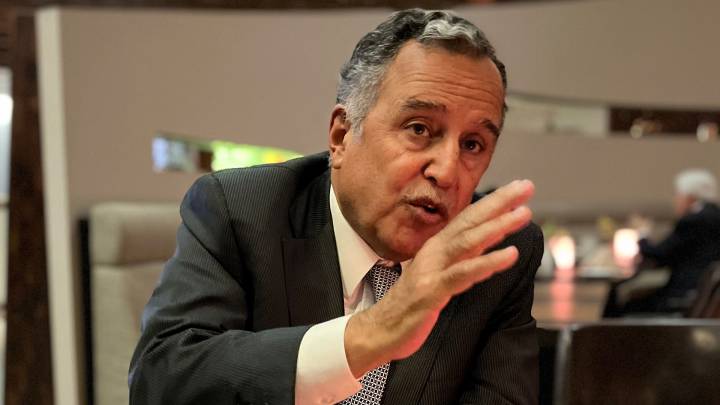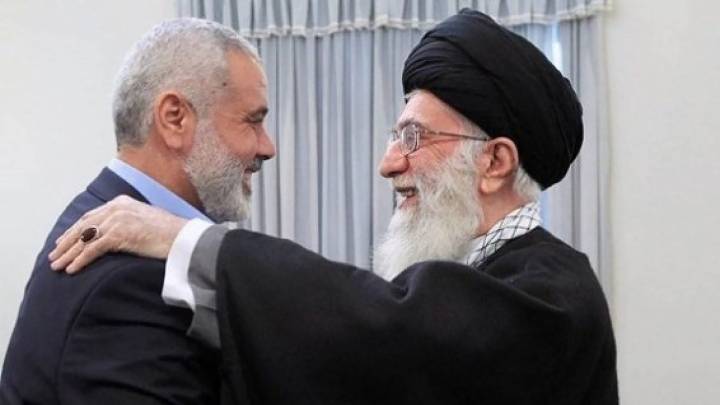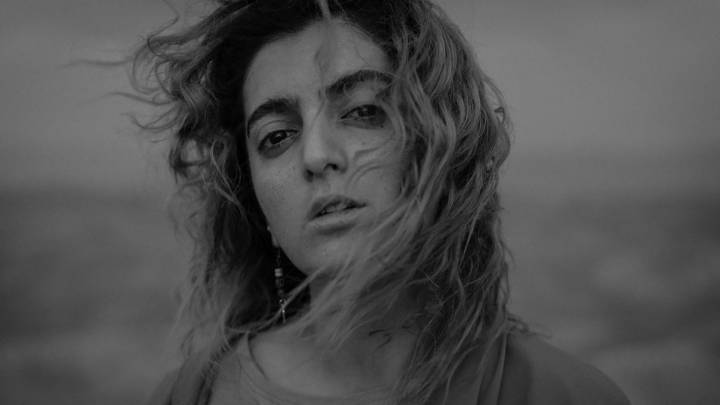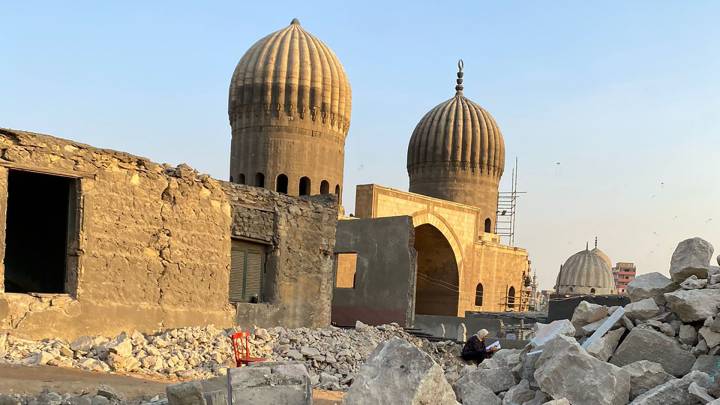Once known as a dusty construction site, Dubai and the wider Gulf has risen to become one of the art world’s new centres, a link between East and West, and a platform for regional artists to receive international exposure.
Dubai, the United Arab Emirates–In 2006, this city-state barely registered on the global art market’s radar. The notion that within a decade the emirate–often regarded as the epitome of flashy Gulf bling, the ‘Las Vegas of the Middle East’–would be a globally renowned art hub would have been laughable. Twenty years ago it would have been complete insanity.
“When I arrived in Dubai, in September 1993, there was one mall, a few restaurants, a few hotels and wild beaches where the neighbourhood goats wandered,” recalls US expatriate Mona Hauser, the founder of the city’s oldest professional gallery, XVA. “It was more sand than cement.”
But over the past decade Dubai has spearheaded the phenomenal rise of the Gulf’s arts sector. Today, art fairs, auction houses, museums, biennales, galleries, studios and workshops proliferate, fuelling an unprecedented interest in Middle Eastern art across the world. In Abu Dhabi, the opulent $27 billion Saadiyat Island project continues apace, with its cultural district to include a colossal performing arts centre and the Gulf outposts of the Guggenheim and Louvre museums.
To many people, art and commerce don’t mix, but I totally disagree: artists need to sell their work and they tend to congregate around art markets more than museums Meanwhile, in Doha, the Qatar Museums Authority has been spending eye-watering sums of money on building a national collection of global masterpieces for their portfolio of new museums. Despite setbacks such as the colossal economic crash of 2009, or criticisms about the lack of a free and organic grassroots art scene and claims by NGOs that the human rights of migrant workers on the construction sites of some of the major museums are being systematically violated, the visibility of global and local contemporary culture in the Gulf has never been livelier than it is today. The story of how Dubai rose to become an art-world destination is a mixture of plucky ambition, blind confidence and of being in the right place at the right time–a city booming as the world’s cultural and economic focus shifted east.
In the mid-2000s, despite lacking the hefty oil revenues of its neighbour Abu Dhabi, Dubai’s confidence was riding high. The Dubai Financial Market General Index peaked in November 2005 and the emirate, with just 0.02 per cent of the earth’s population, was employing more than 10 per cent of the world’s tower construction cranes, dotted along the miles of construction sites that stretched into the desert horizon. The city was awash with cash, celestial ambition and colossal quantities of self-confidence. The appointment of Sheikh Mohammed bin Rashid Al Maktoum as the emirate’s ruler in January 2006, following the death of his brother, fuelled the momentum that was propelling the tiny city-state’s aspirations to create a haven for world’s super-rich.
[[{"attributes":{},"fields":{}}]]
With the construction boom came expats, including an educated and motivated population lured there by the promise of a tax-free job and glamorous lifestyle in sunny Dubai. Anotherdevelopment was the maturing of the UAE’s higher education system. Before the late 1990s, wealthy local children were frequently sent abroad to study, but as the emirates developed, universities such as the American University in Dubai and Sharjah opened up, offering degree-level education. These institutions catered to local women unable or unwilling to study abroad, local men who felt uncertain about studying in the tense, post 9/11 climate, and other Gulf citizens. A surfeit of students in Dubai meant a pressing need for creative outlets and a platform for ideas, reaction and art. Similarly, as the expat population matured, a new wave of young expat children came of age.
Next door, in the neighbouring emirate of Sharjah, a young Emirati collector and patron, Sultan Sooud al Qassemi, was watching as the region’s artists and collectors began flocking to Dubai as developments in the cultural sector began to gather steam. “It was boom time in Dubai,” al Qassemi says today. “There was definitely a buzz going on in the emirates then. More galleries were opening as more people were moving to Dubai and more luxury apartments were being built. People were buying homes in luxurious developments (this was when expats were first allowed to own houses) and needed art to hang on the walls. In addition to being an investment, it was a sign of affluence to have art in their expensive homes.”
When [they] started, people didn’t know what Christie’s or the Gulf Art Fair would bring. Would they succeed? Was there a market?Sheikh Mohammed taking office with a very pragmatic style of leadership was also an important factor, he says. The change in demographics, the real estate boom, and art galleries opening up–“all of this came together at the right time.” Amidst this febrile environment, the idea to launch an art fair came to John Martin, a London art dealer visiting Dubai. Impressed with the rapid progress, and seeing the potential for a new art market in the region, Martin and old friend and business partner, banker Ben Floyd, hatched a plan for a fair that would bring the cash-rich population of Dubai in contact with the moneyed world of the Western contemporary art market, in the tax-free, pro-business setting of Dubai.
“I see Dubai’s real role as one of fostering art commerce,” Martin said then in 2006. “To many people, art and commerce don’t mix, but I totally disagree: artists need to sell their work and they tend to congregate around art markets more than museums. Art commerce is another side of culture, but one that is every bit as exciting and stimulating and vital as anything you will see in a museum.”
“John and I set it up together because we saw an opportunity,” Floyd says today. “Despite there being a plethora of art fairs in the West, there was nothing in the region. We had a blank canvas to curate something important and different.”
The first edition
In March 2007, the first edition of the Gulf Art Fair–later Art Dubai–was held. Martin invited 40 established and emerging galleries in China, India, Japan and Korea as well as Europe and the US, including London’s White Cube and Los Angeles’ 1301 PE. Artists included Wim Delvoye, Kader Attia, Haluk Akakçe and Jitish Kallat, while the small pack of influential curators included Jerome Sans, Hans Ulrich Obrist, Lance Fung, Jack Persekian and Vasif Kortun. 9,000 curious visitors attended the show.
To a city focused on developing its global credentials, it quickly became apparent that an art fair would attract a wave of cultural tourism, create a cultural context for Dubai and build a self-sufficient art market–a boost to local marketing, shipping, insurance and hotels.
For local and regional artists it was good news too, with a forum to be shown in and to be viewed by wealthy Gulf buyers of art. Furthermore, young artists across wider Middle East region, North Africa and Asia found a safe, commercially-viable home to show work and gain international recognition–previously much harder for artists labouring in obscurity in Palestine, Iraq, Iran or Saudi Arabia.
Other ventures were also afoot. At about the time Martin struck upon the idea of an art fair, William Lawrie, a 25-year old new recruit at Christie’s with a special interest in the Middle East, was sitting nervously in a boardroom meeting in London, about to drop a bombshell which would revolutionise the Middle Eastern art market.
“It was a big boardroom meeting, with many of the senior people,” he recalls today. “I was meant to be just taking notes for my absent department head. I put up my hand and told them about a group of Ottoman kiswa fragments I was being offered for an Islamic art sale. These things have special significance, as they once covered the Ka’aba in Mecca. Christie’s were already intending to show some Iznik pottery and jewellery, so the space that was booked [in Dubai] was small. I said, ‘If you can guarantee enough space to show a 17 metre belt and 5 1⁄2 metre high Burka [the main door covering of the Ka’aba], I pretty much guarantee that I can get them into this sale and they’ll definitely be the highlight of the show.’ They were gobsmacked! I was 25 years old and telling them this! They looked at me and said ‘Okay, let’s do it.’”[[{"attributes":{},"fields":{}}]]The initial Christie’s Dubai auction, International Modern & Contemporary Art in the Middle East, took place in May 2006. Sultan al Qassemi was one of the local collectors intrigued by the new venture. “When it started, people didn’t know what Christie’s or the Gulf Art Fair would bring. Would they succeed? Was there a market?”
There clearly was. Lawrie had guessed that the vast, untapped market would engage with the auction, given the plenitude of affluence, cosmopolitan clientele and quality of consigned artworks in the sale. He made a plan estimating a result of about $750,000. On the night of the auction, as the first ten lots of Arab art each sold for ‘three or four times’ the estimate, a nervous, tense Lawrie began to relax. Then the serious money began to pour in. By the end of the night, the auction had made just over $2.2m.
“We were very lucky for two reasons. The first is that Dubai at that time was in its bull-market stage. Any idea that sounded semi-feasible would fly and people would run with it. The second is that it was just far away enough from 9/11 and the invasion of Iraq, that there were people who got behind it for ideological reasons,” says Lawrie.
Meanwhile, after the first edition of the Dubai art fair proved a success, Dubai International Finance Centre (DIFC), the emirate’s investment arm, decided to buy a 50% stake in the event. For the second edition, it was rebranded as Art Dubai and a “supercharged” phase of expansion began, says Martin.
With DIFC established to promote wealth creation in the emirate, Al Qassemi points out that its long-term ambitions dove-tailed neatly with the new art fair. “From the beginning, DIFC saw the potential in art that was missing from the Dubai economic formula. Art was a localised economy. People were buying and selling to residents.”
A heavyweight sponsor also came on board, private equity firm Abraaj Group. They launched the Abraaj Group Art Prize (AGAP), managed in partnership with the fair. Each year, artists from across the Middle East, South Asia and North Africa are invited to submit proposals for an unrealised artwork, before four winning artists are shortlisted for the final prize. The ultimate winner pockets $100,000 and is assigned a guest curator to create their piece. [[{"attributes":{},"fields":{}}]]
Over the years, thanks to their inclusion in the Abraaj prize, a number of artists have leapt onto the global stage, such as Kader Attia, Yto Barrada, Taysir Batniji, Vartan Avakian and Abbas Akhavan. Following exhibition at Art Dubai, these artists and numerous shortlisters have found their works bought or shown at institutions worldwide, such as the Montreal Biennale, Singapore Art Museum, Kochi Muziris Biennial and Kunsthalle Vienna. One former winning artist, Egyptian-born video artist Basim Magdy, even scooped the prestigious Deutsche Bank Artist of the Year 2016, after coming to prominence in the 2014 edition of AGAP.
On a bull run
Back at Christie’s, Lawrie was on a bull run. The auctioneer’s second sale, in February 2007, again exceeded all expectations, resulting in a $4.1m total. Here, new records were set for future megastar Farhad Moshiri, as well as the Arab artist Ahmed Moustafa. A third sale, in October 2007, pulled down $12.6m. The next sale in 2008 drew in $20m, which included Iranian sculptor Parviz Tanavoli’s Oh Persepolis alone, making a staggering $2.4m. “The Iranian market was going absolutely berserk,” remembers Lawrie. But it couldn’t last. As Lawrie and his team were preparing for the 2008 sale, the global economy suddenly tipped and tilted perilously on its axis. Clouds of cash began evaporating around the world.
“We had just sent the catalogue to print when Lehman Brothers went down in ’09,” recalls Lawrie. “Everyone in the West was now talking about recession. But Dubai being Dubai, people were feeling they were protected. The Christie’s auction was the first obvious test of whether that was true or not. Two or three weeks before the auction, I was trying to lower all the reserves and as result of that, the auction wasn’t a complete bloodbath.”
But eventually the recession hit Dubai and it hit hard. Real estate speculation had played a major role in the emirate’s construction boom, with apartments sold ‘off-plan,’ the deposits paid long before construction had even begun, often in order to resell the paper title for a healthy profit. It was a house of cards, and Dubai paid the price, suffering the world’s steepest property collapse as home prices dropped 50 per cent from their 2008 peak. Billions of dollars worth of building projects were cancelled or mothballed. The cranes returned to their homes or stood idle and thousands of jobs disappeared.
As the dust settled over the next few years and support from oil-rich Abu Dhabi shored up the tottering emirate, the fledgling art market re-emerged, battered, bruised, smaller but tougher. For a while though the reckless spending slowed down. William Lawrie left Christie’s in 2010 to launch a gallery with Iraqi-born Asmaa al Shabibi, in the Alserkal Avenue district of the city. “Today, the market is more discerning, it definitely had a correction in late 2008-2009 due to the credit crunch.”
[[{"attributes":{},"fields":{}}]]
Nevertheless, today the mega-lots at auction are as astronomical as ever, with Western art, established modern Middle Eastern and the occasional hot new name still commanding mind-boggling sums. Sotheby’s Contemporary Art Doha auctions have seen Middle Eastern and Iranian art mixed with Western names. One such superstar, Iranian Ali Banisadr recently sold a 2011 oil painting The Chase for $557,000, a record for the artist. In a 2014 sale at Christie’s, the top lot was a painting by Abdul Hadi El-Gazzar (Egyptian, 1925-1965), Construction of the Suez Canal, which was estimated at $100,000-150,000 and sold for $1,023,750, ten times its low estimate.
Tastes in the Gulf have also matured. Dealers and collectors have benefited from a decade of professionalism and accountability in the UAE art market, due to Christie’s extensive research and educating of their audience. The result is a far more discerning pool of buyers. Having created market superstars, revived long-forgotten Modernists and convinced the buying public of their viability, these days auction houses face an informed and market-savvy clientele, who are more likely to pause and reflect before parting with their cash. Collecting, in Dubai, has grown up.
Auctions and sales have also helped change tastes. In 2006, auctions in the Gulf had been few and far between, and no one had thought of arranging a sale of contemporary Middle Eastern art, aimed at local collectors. Neither had the idea of presenting Iranian and Arab art in tandem been tried before. “It took about three seasons for [the collectors] to accept and get behind it and now these days the idea of putting the two together isn’t a question any more,” says Lawrie. “The biggest buyers of Iranian art, by the fourth Christie’s auction in Dubai, were Arab collectors.”
It’s not only local buyers that have become more interested in the regional art scene: the impact of Art Dubai on global art cross-currents has been hugely significant for providing exposure for contemporary art from the greater Middle East. Not only has the fair provided a stage for pan-regional art to shine, but it’s reflected the gradual devolution of influence from traditional hubs in the West–London, New York and Los Angeles–to a new world order, where Russia, India, Asia and the Middle East have developed new art economies for themselves.
“Art Dubai has helped a lot with the international outlook and the market for the Middle East in general,” says Dubai-based dealer Yasmin Atassi of Green Art Gallery, a regular at the fair. “Mostly it helped regionally and locally–it’s been very successful in allowing the international world to look at Dubai, the Middle East in general and we’ve met fantastic collectors who came from Brussels, Paris and New York.”
Raising art's profile
One key institutional buyer, for whom the fair afforded an unprecedented insight into the region’s thriving art scene, was London’s British Museum. The assistant keeper at the Department of the Middle East, Venetia Porter, has become a regular visitor to the emirate each year and has acquired numerous works for the museum’s collection of Middle Eastern art, including pieces by Palestinian multimedia artist Hazem Harb, Lebanese sculptor Michel Basbous and Egyptian painter Khaled Hafez, as well as a major piece by the late Iranian multimedia artist Farideh Lashai, entitled When I Count, There Are Only You...But When I Look, There Is Only a Shadow (2012-2013), a powerful suite of 80 photo-intaglio prints with projection of animated images. Porter reflects a key factor in the fair’s success: its ability to present the regional whole in an accessible manner.
“When you go, there are more and more patrons and museum directors who are not able to go to places around the Middle East. They go to Art Dubai where they are provided with an extraordinary window onto the art scene. I think it’s really important. It’s had a huge impact in disseminating a world, to people who didn’t know much about Middle Eastern art,” says Porter. [[{"attributes":{},"fields":{}}]]
Interest is growing. Just a small sample of Middle Eastern-related action worldwide over the last few years would include a major overview of Iranian 20th century art at New York’s Asia Society in 2013; Manhattan’s New Museum overview of Arab contemporary the same year; the Tate Modern’s retrospectives of Lebanese sculptor Saloua Raouda Choucair, the Amory fair’s ‘FOCUS:MENAM’ in early 2015 and the Whitechapel gallery’s show of Modern Arab and Iranian art from the Barjeel Art Foundation Art collection in the UAE, a series of exhibitions which ran from 2015 until January 2017.
At the 2015 Art Dubai closing night party, the buzz of another successful year is palpable in the warm springtime night. Legendary Parisian dealer Daniel Templon just flew in from Art Basel Hong Kong the day before. He is beaming. “I love Dubai! It’s totally unreal. It is a place to make connections.” Meanwhile, New York dealer Leila Heller is talking up her new gallery, opening in Dubai’s Alserkal cultural district in November 2015. At 12,000 square foot, it’s set to be the biggest gallery in the city. “I started coming here about eight, ten years ago,” she says. “The changes have been phenomenal!”
Nearby, Art Dubai director Antonia Carver is speaking to Art-net’s Coline Milliard. “Only ten years ago, the idea of Dubai being a cultural centre would have been unthinkable,” she enthuses. “Dubai has now really emerged as an art market centre, but also as place for artists. It’s a centre not only for the Middle East but also South, East, Central Asia, and increasingly, Africa too–Art Dubai is a picture of tomorrow’s art world.”
Arsalan Mohammad has reported extensively on the Middle Eastern art scene for publications including Time Out Dubai, The National and as editor-in-chief at Harper’s Bazaar Art Arabia.
This article was first published in the 2015/4 edition of the zenith print magazine.
